Winter aconite (Eranthis hyemalis), also known as Winter Hellebore or Winter Wolf’s Bane, is a charming flowering plant from the buttercup family (Ranunculaceae). Native to woodland areas in Europe and Asia Minor, this species is recognized for its vibrant early blooms that brighten landscapes during late winter and early spring. A true spring ephemeral, Winter aconite completes its life cycle quickly, becoming dormant for most of the year.
Despite its delicate appearance, all parts of this bulbous plant are toxic to humans and animals, requiring careful handling and mindful placement in gardens. This unique characteristic, coupled with its early blooming nature, makes Winter aconite a fascinating addition to the garden.
| Common name | Winter Aconite, Winter Hellebore, Winter Wolf’s Bane |
| Botanical name | Eranthis hyemalis |
| Family | Ranunculaceae |
| Species | hyemalis |
| Origin | Asia Minor and Europe |
| Life cycle | Bulb |
| Plant type | Bulb |
| Hardiness zone | 3, 4, 5, 6, 7 |
| Sunlight | Full Sun |
| Maintenance | Low |
| Soil condition | High Organic Matter |
| Soil ph | Alkaline |
| Drainage | Well-Drained |
| Spacing | Less than 12 in. |
| Harvest time | Spring |
| Flowering period | Spring |
| Height | 3 in. – 6 in. |
| Flower color | Gold, Yellow |
| Leaf color | Green |
| Fruit color | Green |
| Stem color | Brown, Copper |
| Fruit type | Capsule |
| Flower benefit | Showy |
| Garden style | Drought Tolerant Garden |
| Uses | Container |
I. Appearance and Characteristics
Eranthis hyemalis, the winter aconite, is a species of flowering plant in the buttercup family Ranunculaceae, native to calcareous woodland habitats in France, Italy and the Balkans, and widely naturalized elsewhere in Europe.
The Latin specific epithet hyemalis means “winter-flowering”, while the name of the genus is a compound of the Greek elements Er ‘Spring’ and anthos ‘flower’ – so named for its early flowering.
It is a tuberous-rooted herbaceous perennial growing to 15 cm (6 in), with large (2–3 cm (1–1 in)), yellow, cup-shaped flowers held above a collar of 3 leaf-like bracts, appearing in late winter and early spring. The six sepals are bright yellow and petaloid, and the petals are of tubular nectaries. There are numerous stamens and usually six unfused carpels. The fruit are follicles each containing several seeds.
As a spring ephemeral plant, its life cycle exploits the deciduous woodland canopy, flowering at the time of maximum sunlight reaching the forest floor, then completely dying back to its underground tuber after flowering.
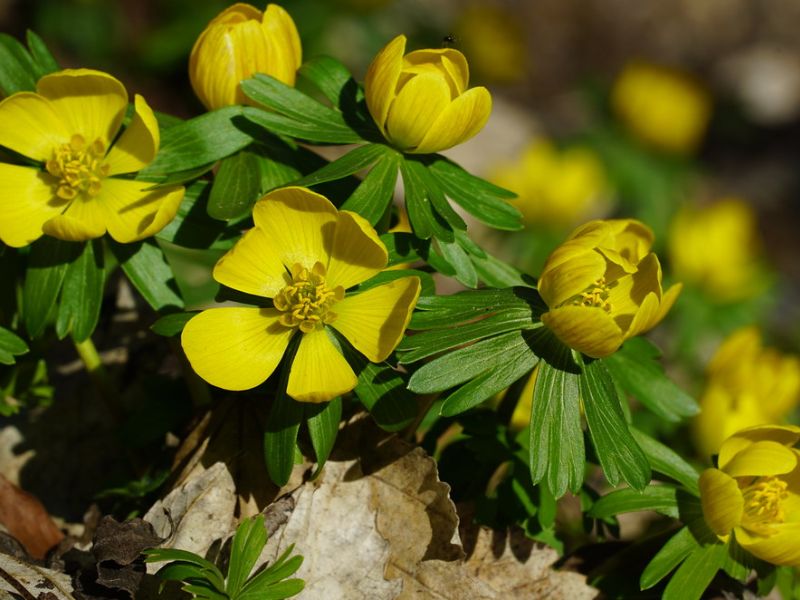
All parts of the plant are poisonous when consumed by humans and other mammals, because it contains cardiac glycosides similar to those present in Adonis vernalis. Glycosides of this type stimulate the heart when administered in small doses, but in very large doses may cause serious, often irreparable heart damage. Poisoning symptoms include colicky abdominal pains, nausea, vomiting, diarrhoea, disturbed vision, dyspnea, bradycardia, and, in severe cases, cardiac arrest. Specific cardiac glycosides present in E.hyemalis include Eranthin A and B, belonging to the bufadienolide group, also found in (and named for) the toad venom bufotoxin.
II. How to Grow and Care
Sunlight
The winter aconite tolerates a wide range of light conditions, from partial shade to full sun. However, growth will be most vigorous in a location that receives at least five to six hours of direct sunlight daily.
Temperature and Humidity
Winter aconite flowers are sensitive to temperature changes, blooming best in warm, sunny weather and closing in cold, overcast weather. However, winter aconite does require warm spring and summer weather to grow and bloom. The plant can handle a range of humidity conditions.
Watering
Thriving in its native woodland settings, winter aconite is accustomed to the moist, well-drained soil found beneath deciduous trees. This plant exhibits a preference for consistent moisture but is also capable of withstanding brief periods of dryness. Its watering regimen aligns with a weekly schedule, ensuring the soil remains evenly damp without becoming waterlogged. Given its propensity for cooler climates and seasonal growth patterns, winter aconite is more commonly cultivated outdoors where it can benefit from natural rainfall during its active growing season.
Soil
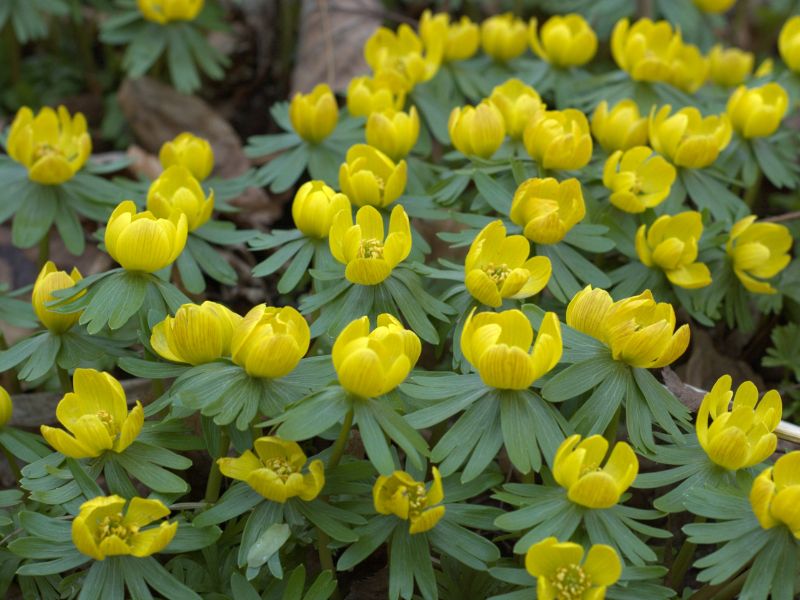
This resilient plant tolerates most soil types but grows best in alkaline soils. Winter aconites are native to woodland habitats with consistently moist, well-drained soil high in organic matter. Planting winter aconites in moderately fertile, humus-rich soil will help to mimic its natural habitat.
Fertilizing
For winter aconite, timing and balance are key. Apply a balanced nutrition fertilizer in early spring as growth emerges, fostering root development and bloom vigor. During flowering, switch to high phosphorus to enhance bloom quality. Fertilize every 4-6 weeks at manufacturer’s recommended rate, avoiding over-application. Seasonal adjustments are crucial—less frequent feeding as dormancy approaches post-blooming. Apply carefully, keeping fertilizer from direct contact with foliage to prevent burn. Novice or pro, ensure fertile, well-drained soil for optimal uptake.
Pruning
Winter aconites are very low-maintenance and don’t require pruning. You can cut off withered, dead leaves, but beyond that, leave the plant alone.
Propagation
Winter aconites are easily propagated through division, which is also a good way to control their growth if they spread too much for your liking. Here’s how it’s done:
- Soon after the plant is done flowering, lift the entire clump using a spade.
- Remove any damaged, diseased tubers and dead leaves.
- Divide the clump into smaller sections. If the tubers are shriveled, rehydrate them by placing them in moist sand or peat moss to rehydrate for a few days.
- Immediately replant them in an appropriate location, 2 to 3 inches deep.
- Water them well and keep watering regularly until you see new growth, then water only during dry spells.
How to Grow From Seed
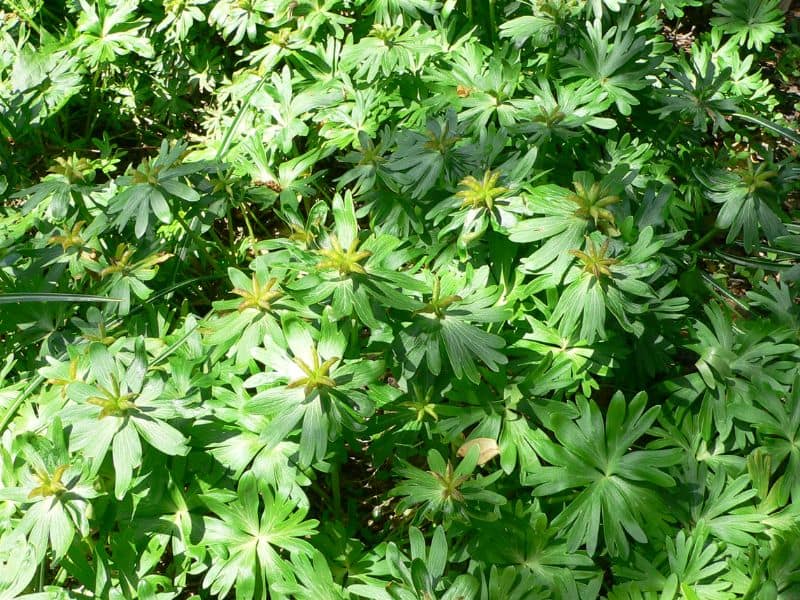
Starting winter aconite from seed is a very lengthy process as the seeds need a long stratification period and it may take them a few years to germinate. For that reason, the recommended propagation method is to divide an existing clump.
Potting and Repotting
Growing winter aconite in pots and having them come back year after year is not always successful because the shallow tuberous roots are prone to cold damage. Plant them in a container with large drainage holes and fill it with rich, well-draining potting soil. During the winter, the pot should be fully buried in the ground to insulate the roots. Also, keep in mind that potted plants need frequent watering, especially during the hot summer months.
Once the plant roots have filled the container, it’s time to repot the plants in a larger pot with fresh potting soil.
Overwintering
Generally, winter aconite is a hardy plant. However, in temperatures below 5 degrees F, the tuberous bulbs may suffer cold damage. Cover the planting bed with a 2-inch layer of mulch for insulation.
Transplanting
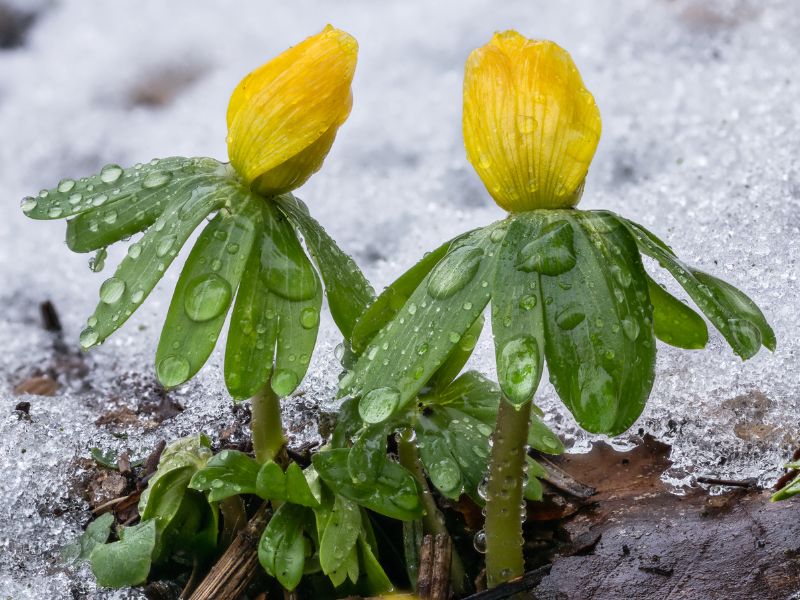
The ideal time to transplant winter aconite is in S10-S12, or late autumn to early winter, when the plant rests leading to less transplant shock. Place winter aconite in partial shade or full sun spots and fertile, well-drained soil. Keep it damp during dry spells after transplanting for thriving growth.
Pests and Diseases
All species of Eranthis are considered virtually disease and pest free.
These plants are rabbit and deer resistant and hardly affected by most of the common garden pests and insects.
However, Eranthis hyemalis is often susceptible to attacks from smut – a type of fungal disease in which parts of the plant disintegrate into black powder.
III. Uses and Benefits
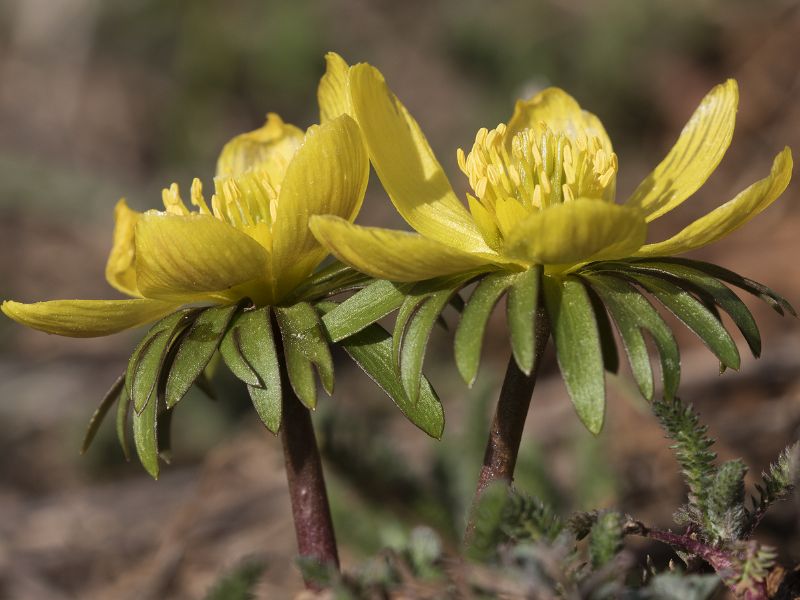
Winter Aconites are among the ideal plants for garden beds and borders.
They are a fine choice for lining paths and walkways or even just to provide ground cover.
Their small shrub size makes them suitable for rock gardens and cottage gardens whereas the small showy flowers of eranthis look truly stunning when grown in round pots and containers.
If you are looking for something to uplift the aura of your garden in the dull, lifeless season, look no further than Winter Aconites.
For a more attractive appeal, plant Winter Aconite ‘Guinea Gold’ – a hybrid variety known for its somewhat rustic, bronzed foliage.
IV. Types of Winter Aconites
- Eranthis hyemalis ‘Schwefelglanz’: a rare cultivar with apricot-colored buds that open to sulfur-yellow flowers.
- Eranthis cilicica: a species very similar to Eranthis hyemalis, also native to Europe but blooming later.
- Eranthis pinnatifida: rare Japanese winter aconite with large white flowers.
Find Where to Buy the Best Winter Aconite (Eranthis hyemalis)
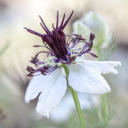


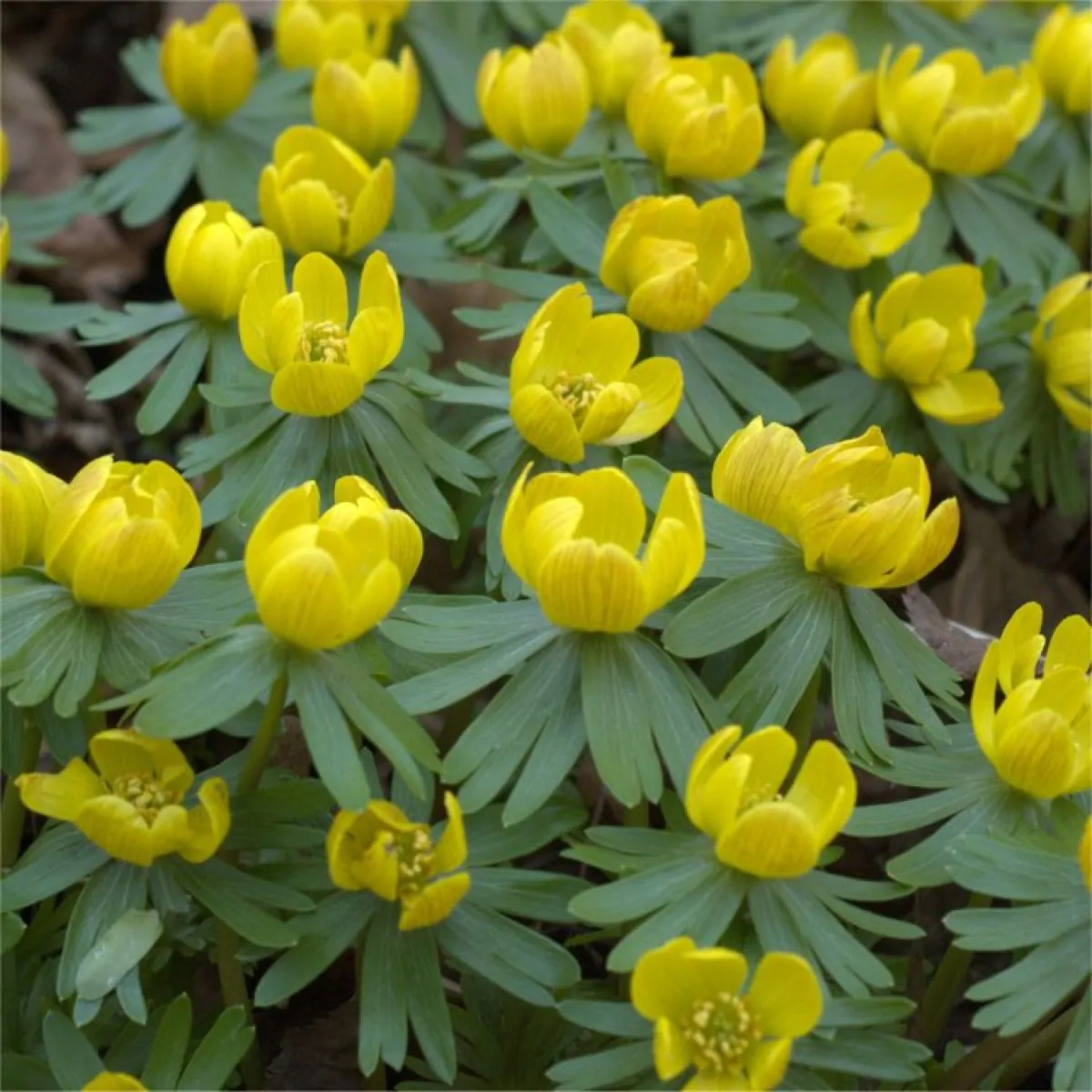














Leave a Reply